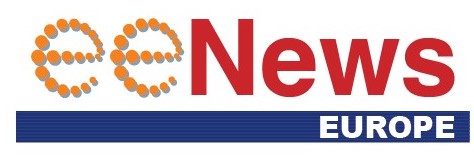Image: Shutterstock – IBM System One Quantum Computer 2020 Consumer Electronics Show, Las Vegas
What’s New: Increasing investment in quantum technologies could result in PNT devices that sense gravitational and magnetic fields at the atomic level. These could be much more difficult to interfere with.
Why It’s Important:
- Any device that requires an incoming stream of signals or data can be subject to signal or data manipulation. Quantum PNT would likely be much less susceptible to such threats.
- RF-based systems require external infrastructure (satellites, towers). This is expensive to establish and maintain. Quantum sensors sense gravitational and magnetic fields, so no infrastructure. BUT – they require gravitational and magnetic field maps that would need to be created and periodically updated. – Are data and maps a kind of infrastructure?
What to Know:
- Quantum is seen as “the holy grail” of PNT by some. Yet no technology is perfectly safe from interference and we haven’t seen much in terms of threat analysis for quantum.
- We have seen some papers on how to spoof inertial sensors. Here is an example from 2018.
- Also, computers and comms pathways have to be involved with any PNT device to make sense of readings, calculate location, and communicate it all to the user. So there will always be potential for cyber mischief,
- Quantum PNT could be here tomorrow, in 20 years, or never. We don’t think it is never, but cost, size, weight, and power (C-SWaP) realities could mean that it turns out to not be practical for many applications
- Navigation and location based on Earth’s magnetic field is already happening.
Quantum Sensing: A New Approach To Maintaining PNT In GPS-Denied Environments
In the event of a conflict or confrontation, the joint and allied force could lose access to satellite capabilities, most notably GPS. Ships, submarines, and aircraft would need to rely almost entirely on other technologies for positioning, navigation and timing (PNT), particularly inertial systems.
Unfortunately, because inertial navigation devices such as gyroscopes and accelerometers lose accuracy over time—and wouldn’t be able to be recalibrated in a GPS-denied environment—inertial navigation would be reliable for only a limited period.
But an emerging technology, quantum sensing, offers the possibility of increasing the accuracy of inertial navigation by orders of magnitude, greatly extending operational availability in GPS-denied environments.
The idea behind quantum sensing is fairly straightforward. Essentially, quantum refers to the realm that exists at the atomic and sub-atomic level. That realm is extremely sensitive to minute changes in the environment—changes that cannot be detected in the everyday world. Quantum sensing harnesses that sensitivity, allowing measurements that are far more precise than what is possible through conventional approaches.
Although using quantum for inertial navigation is a technology of the future, that future may not be far away. Quantum sensing is already used in atomic clocks—including in military satellites—and in devices such as MRI machines. Government and private researchers are making rapid advances in quantum sensing for inertial navigation, and some devices may be ready for deployment by the military in as little as five years, according to the NATO Review.
For that to happen, however, defense organizations need to take steps now to make sure that the quantum gyroscopes and other devices being developed are practical for current and future ships, submarines, and airplanes. Quantum sensing devices typically require a great deal of size, weight, and power, and researchers are now focusing on ways to make them work for the Navy and other services.
It’s important that defense organizations develop deep expertise in quantum sensing, and take the lead in driving the requirements, so that the quantum devices can be deployed as soon as possible. China is now aggressively pursuing quantum sensing for inertial navigation, and could leave the U.S. behind.
HOW QUANTUM SENSING WORKS
The behavior of atoms, particles of light, and other denizens of the quantum realm can reveal a great deal about what is happening in the larger physical world. For example, when a cloud of atoms inside a vacuum is in an excited state, the atoms become highly sensitive to the gravitational field around them. By looking at the patterns the atoms form, quantum devices can create a picture of the gravitational field around a ship or submarine. With repeated readings as the ship moves, that picture becomes increasingly detailed. Onboard computers can then overlay the picture with maps of Earth’s gravitational field to determine the ship’s precise location.
An entirely different type of quantum sensing can measure the surrounding magnetic field, also helping to plot a ship’s location. With a quantum magnetometer, a tiny wire made of special materials is made so cold that it has virtually no electrical resistance. This eliminates “noise” on the wire, so that when an electrical charge is sent through it, the wire becomes highly sensitive to the magnetic field at the atomic level. The device takes a series of measurements to determine the surrounding magnetic field, which can then be compared to magnetic field maps of the world.
Additional types of quantum sensing can aid other aspects of inertial navigation. A quantum gyroscope, for example, uses the wave nature of atoms to measure angular rotation. An atomic clock sets its watch by the predictable rate that excited atoms decay. A quantum accelerometer measures the movement of super-cooled atoms.
What all these quantum devices have in common is that they are self-contained and completely independent of GPS or other outside communications. In addition, because measurements in the quantum realm are far more accurate than with conventional approaches, quantum inertial navigation can be relied upon for much longer periods.
£75m for UK quantum computer, sensor prototypes
UK Research and Innovation (UKRI) has announced £45m of funding for quantum technology projects, while the National Quantum Computing Centre (NQCC) is backing a number of quantum computer prototype testbeds in a £30m project.
The announcements are part of a series for UK Tech Week.
The UKRI Technology Missions Fund is providing £8m for 12 projects exploring quantum technologies for position, navigation and timing (PNT), £6 million for 11 projects working on software enabled quantum computation and £6 million for 19 projects’ feasibility studies in quantum computing applications.
£25 million is supporting seven projects for quantum-enabled PNT via the Small Business Research Initiative (SBRI).





